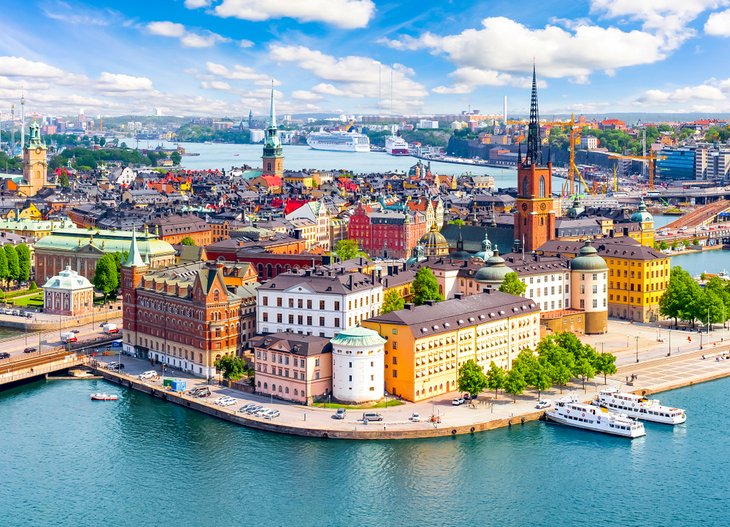Top Countries Leading the Race towards Net Zero
A Closer Look at their Sustainable Development Goals

As the world grapples with the urgent need to combat climate change, several countries have emerged as leaders in the race towards achieving net zero emissions. These forward-thinking nations have not only set ambitious targets to reduce greenhouse gas emissions, but they have also incorporated sustainable development goals into their strategies. In this article, we will take a closer look at the top countries leading the charge towards a sustainable future and examine how they are aligning their efforts with the United Nations' Sustainable Development Goals (SDGs). From innovative renewable energy projects to transformative policies.
Join us as we delve into the strategies and initiatives of these trailblazing countries, highlighting their commitment to not only mitigating climate change but also fostering social and economic progress. Discover how these nations are redefining what it means to achieve net zero emissions and how their sustainable development goals are shaping their journey towards a more sustainable future.
Why net zero emissions are important for the environment
Net zero emissions refer to the balance between the amount of greenhouse gases emitted into the atmosphere and the amount removed or offset. Achieving net zero emissions is crucial to combating climate change and its devastating effects on the environment. By reducing greenhouse gas emissions to net zero, we can stabilize the global temperature increase and prevent catastrophic consequences such as extreme weather events, rising sea levels, and loss of biodiversity.
The transition to net zero emissions requires a holistic approach that encompasses various sectors such as energy, transportation, agriculture, and industry. It involves implementing renewable energy sources, improving energy efficiency, adopting sustainable land-use practices, and promoting circular economies. By embracing these strategies, countries can not only mitigate climate change but also create green jobs, enhance energy security, and improve public health.
The role of sustainable development goals in achieving net zero emissions
The United Nations' Sustainable Development Goals (SDGs) provide a comprehensive framework for countries to address the interconnected challenges of sustainable development, including climate change. The SDGs consist of 17 goals, each with specific targets to be achieved by 2030. These goals encompass a wide range of issues, including poverty eradication, gender equality, clean energy, sustainable cities, and climate action.
In the context of achieving net zero emissions, sustainable development goals play a crucial role. They provide countries with a roadmap to integrate climate action into their overall development strategies. By aligning their efforts with the SDGs, countries can ensure that their transition to net zero emissions is socially inclusive, economically viable, and environmentally sustainable.
Exploring the top 5 countries leading the race to net zero emissions

1. Sweden
Sweden has emerged as a global leader in the race towards net zero emissions. With a strong commitment to sustainable development, this country has set ambitious targets to reduce greenhouse gas emissions and transition to renewable energy sources. Their sustainable development goals include achieving universal access to clean energy, promoting sustainable agriculture, and building resilient infrastructure.
To achieve these goals, Sweden has implemented various initiatives and policies, including:
1. Heavy investments in renewable energy projects, such as wind and solar farms.
2. Implementation of energy efficiency measures across different sectors.
3. Adoption of carbon pricing mechanisms to incentivize emission reductions and promote low-carbon technologies.
These efforts have led to significant outcomes:
1. Reduction of greenhouse gas emissions.
2. Creation of new job opportunities.
3. Stimulated economic growth.
2. Norway
Norway is another frontrunner in the race towards net zero emissions. They have recognized the importance of sustainable development and have integrated it into their national policies and strategies. Their sustainable development goals include promoting sustainable cities and communities, ensuring access to affordable and clean energy, and taking urgent action to combat climate change.
To achieve these goals, Norway has implemented a range of initiatives, including:
1. Investment in public transportation systems to diminish vehicle emissions.
2. Encouragement of electric vehicle use through incentives and infrastructure development.
3. Implementation of energy efficiency programs in buildings and industries, resulting in reduced energy and greenhouse gas emissions.
4. Active participation in international collaborations to share best practices and expedite the transition to a low-carbon economy.
3. Denmark
Denmark has demonstrated a strong commitment to sustainable development and has made significant progress towards achieving net zero emissions. Their sustainable development goals encompass a wide range of areas, including affordable and clean energy, sustainable consumption and production, and climate action.
To achieve these goals, Denmark has implemented innovative policies and initiatives, which include:
Renewable Energy Projects:
1. Investment in large-scale solar and wind farms.
2. Implementation of energy efficiency measures within buildings and industries.
Sustainable Land-Use Practices:
1. Adoption of reforestation and afforestation to absorb carbon dioxide from the atmosphere.
Positive Outcomes:
1. Reduction of greenhouse gas emissions.
2. Enhancement of energy security.
3. Improvement of air quality.
4. Switzerland
Switzerland has emerged as a leader in sustainable development and has made significant strides towards achieving net zero emissions. Their sustainable development goals include promoting sustainable economic growth, ensuring access to affordable and clean energy, and taking urgent action to combat climate change.
To achieve these goals, Switzerland has implemented transformative policies and initiatives, including:
Investment in Renewable Energy:
1. Emphasis on renewable energy sources like solar and wind power.
2. Implementation of energy efficiency measures within buildings and industries.
Sustainable Transportation Systems:
1. Promotion of electric vehicles.
2. Development of efficient public transportation networks.
Positive Outcomes:
1. Reduction of greenhouse gas emissions.
2. Creation of new job opportunities.
3. Stimulation of economic growth.
5. Austria
Austria is at the forefront of the race towards net zero emissions. Their sustainable development goals encompass a wide range of areas, including affordable and clean energy, sustainable cities and communities, and climate action.
To achieve these goals, Austria has implemented bold initiatives and policies, which include:
Investment in Renewable Energy:
1. Heavy investment in renewable energy projects, including offshore wind farms and solar power installations
Energy Efficiency Measures:
1. Implementation of energy efficiency measures across various sectors
2. Reduction of energy consumption and greenhouse gas emissions
Sustainable Transportation Systems:
1. Promotion of electric vehicles
2. Development of cycling infrastructure
Positive Outcomes:
1. Reduction of greenhouse gas emissions
2. Improvement of air quality
3. Enhancement of the quality of life for citizens
Key takeaways and lessons from the top country's efforts

The efforts of the top countries leading the race to net zero emissions provide valuable lessons and insights for the global community. Firstly, their commitment to sustainable development goals has been instrumental in driving their transition to a low-carbon economy. By integrating climate action into their overall development strategies, these countries have ensured that their efforts are comprehensive and sustainable.
Secondly, international collaboration has played a crucial role in accelerating the transition to net zero emissions. The exchange of knowledge, best practices, and technologies has enabled countries to learn from each other and implement effective strategies. It is essential for countries to collaborate and support each other in achieving their sustainable development goals and mitigating climate change.
Lastly, the top countries' efforts have demonstrated that achieving net zero emissions is not only crucial for the environment but also beneficial for social and economic progress. The transition to a low-carbon economy has created new job opportunities, enhanced energy security, and improved public health. It is a win-win situation that enables countries to address climate change while fostering sustainable development.
The importance of international collaboration for achieving net zero emissions
The transition to net zero emissions requires global cooperation and collaboration. No single country can achieve this goal alone. It is crucial for countries to work together, share knowledge and resources, and support each other in their efforts to mitigate climate change.
International collaboration can take various forms, including sharing best practices, technology transfer, financial support, and capacity building. By collaborating, countries can accelerate the transition to a low-carbon economy and achieve their sustainable development goals more effectively.
Furthermore, international collaboration can foster innovation and drive the development of new technologies and solutions. By pooling resources and expertise, countries can overcome common challenges and find innovative solutions to mitigate climate change.
Conclusion: The future of net zero emissions and sustainable development goals
The top countries leading the race to net zero emissions have shown that achieving this goal is not only possible but also beneficial for social, economic, and environmental progress. Their efforts to align with the United Nations' Sustainable Development Goals have ensured that their transition to a low-carbon economy is holistic and inclusive.
As the world faces the urgent need to combat climate change, it is crucial for more countries to follow in the footsteps of these trailblazing nations. By setting ambitious targets, implementing transformative policies, and collaborating internationally, countries can pave the way for a greener and more sustainable future.
The journey towards net zero emissions and the achievement of sustainable development goals requires collective action and a commitment to long-term change. By working together, countries can create a world where economic prosperity and environmental sustainability go hand in hand. It is up to us to make the necessary changes and build a better future for generations to come.




